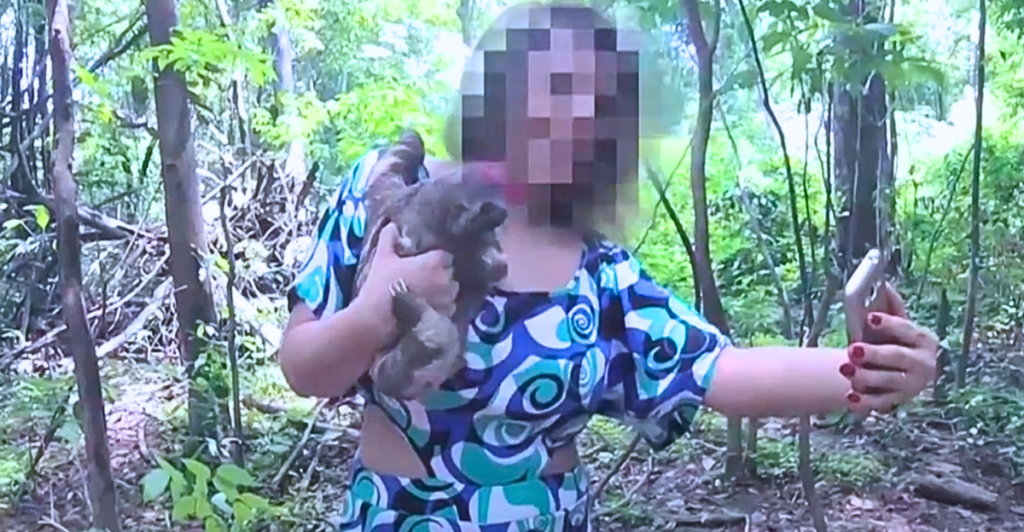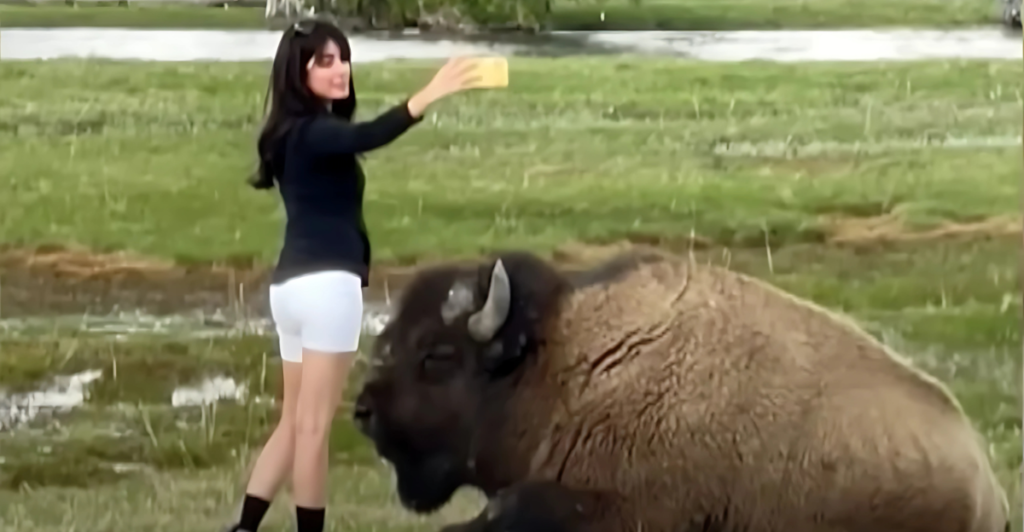
In an era where social media dominates personal experiences, taking selfies with wild animals has become a contentious global trend. From dangerous encounters to harsh criticisms, 2024 has seen a surge of incidents highlighting the consequences of exploiting wildlife for fleeting moments of fame.
The Rise of the Wildlife Selfie Craze

Tourists have flocked to exotic destinations in search of close encounters with wild animals, hoping to capture the ultimate Instagram-worthy shot. However, experts warn that such activities not only harm wildlife but also endanger human lives. This year, several incidents served as cautionary tales, emphasizing the growing need for responsible tourism.
One viral incident occurred in Thailand’s Khao Yai National Park, where a tourist was attacked by a wild elephant after attempting to pose for a selfie. The video of the encounter, shared widely online, revealed the elephant’s apparent distress as the tourist invaded its space. Park officials stated that the elephant had shown warning signs, but the individual ignored repeated advisories to maintain a safe distance.
The Iguana Incident in the Galápagos

In the Galápagos Islands, a UNESCO World Heritage Site, a tourist attempting to photograph an endangered marine iguana faced swift repercussions. As the individual approached too closely, the iguana retaliated by biting the tourist’s hand. Local authorities fined the tourist $10,000 for violating strict conservation laws.
Marine biologist Dr. Carla Rivera commented on the incident, stating, “These animals are not props for entertainment. Their habitat is their sanctuary, and human interference disrupts their natural behavior.” The incident sparked a broader discussion about the ethics of wildlife photography and the responsibility of tourists to respect protected environments.
Social Media’s Role in Wildlife Exploitation

Platforms like Instagram and TikTok have fueled the wildlife selfie craze, with influencers often sharing images of themselves holding exotic animals or posing dangerously close to predators. Conservationists argue that such content perpetuates a harmful cycle, encouraging others to replicate these risky behaviors.
A study published in 2024 by the International Union for Conservation of Nature (IUCN) revealed a sharp increase in animal injuries linked to tourism activities. Many species, including sloths, dolphins, and big cats, have suffered stress, injury, or even death as a result of forced interactions with humans.
Legal Action Against Irresponsible Tourists

Governments worldwide are cracking down on irresponsible wildlife tourism. In Costa Rica, authorities arrested two tourists who were caught capturing a baby sloth for selfies. The sloth, separated from its mother for hours, required rehabilitation at a wildlife rescue center.
Costa Rica’s Minister of Environment, María López, announced stricter penalties for wildlife harassment, stating, “Our laws are designed to protect the delicate balance of our ecosystems. Violators will face severe consequences.”
Karma Strikes in Yellowstone

Yellowstone National Park in the United States has been another hotspot for wildlife selfie controversies. In May 2024, a tourist attempting to pet a bison while taking a selfie was gored and hospitalized. The park rangers emphasized that bison are unpredictable and can run three times faster than humans.
This incident followed a series of warnings issued by park officials urging visitors to remain at least 25 yards away from large animals like bison and elk. Despite these warnings, overzealous tourists continue to risk their lives for the perfect shot.
Conservationists Call for Awareness Campaigns

In response to these alarming trends, conservation organizations are launching global campaigns to educate tourists about the impact of their actions. The World Wildlife Fund (WWF) initiated the “Click with Care” campaign in 2024, aiming to promote ethical wildlife photography.
WWF spokesperson Angela Patel stated, “A selfie should not come at the cost of an animal’s well-being. We encourage tourists to observe wildlife from a safe distance and avoid direct interaction.”
The Psychological Impact on Wildlife

Wildlife experts have also highlighted the psychological toll on animals subjected to constant human interaction. In India’s Bandhavgarh National Park, several tigers have displayed signs of stress and aggression, which researchers attribute to overcrowding by tourists.
Dr. Rajiv Menon, a wildlife ecologist, explained, “Animals perceive humans as predators. Repeated encounters can lead to heightened stress levels, affecting their health and behavior. It’s imperative that we prioritize their welfare over our entertainment.”
Ethical Alternatives to Wildlife Selfies

As the backlash against wildlife selfies grows, ethical tourism alternatives are gaining traction. Sanctuaries and wildlife reserves now offer guided tours that allow visitors to observe animals in their natural habitats without interference.
Travel agencies are also promoting virtual safaris and wildlife photography workshops as sustainable options. These experiences enable individuals to appreciate nature without disrupting ecosystems.
Social Media Influencers Take Responsibility

Interestingly, some influencers have begun using their platforms to advocate for wildlife conservation. Travel blogger Sophie Lane, who once posted selfies with exotic animals, now educates her followers about the dangers of such practices.
“I realized the harm I was causing,” Lane admitted. “Now, I use my platform to raise awareness about ethical tourism. It’s important to learn from our mistakes and do better.”
The Importance of Wildlife Conservation Laws

Experts emphasize that robust wildlife conservation laws are essential to curbing irresponsible behavior. Countries like Australia and Brazil have implemented strict regulations, including heavy fines and imprisonment for those caught exploiting animals.
In the Australian outback, a tourist was fined $20,000 for chasing a kangaroo for a photo. The incident sparked widespread outrage and underscored the importance of respecting wildlife boundaries.
A Global Call to Action

As the debate around wildlife selfies intensifies, global leaders and conservationists are calling for collective action. The United Nations plans to address the issue at its 2024 Biodiversity Summit, urging member states to prioritize wildlife protection.
UN Secretary-General António Guterres remarked, “Preserving our planet’s biodiversity is a shared responsibility. We must act decisively to safeguard our natural heritage for future generations.”
A Sobering Lesson for Tourists

The message is clear: wildlife is not here for human amusement. From hefty fines to life-threatening encounters, the consequences of irresponsible tourism are becoming increasingly apparent.
As travelers plan their next adventures, they are urged to consider the ethical implications of their actions. Respecting wildlife and their habitats is not just a moral obligation—it’s a necessary step toward preserving the planet’s delicate ecosystems.
In the words of conservationist Jane Goodall, “Only if we understand, can we care. Only if we care, will we help. Only if we help, shall all be saved.”
Stay connected with us for more stories like this! Follow us to get the latest updates or hit the Follow button at the top of this article, and let us know what you think by leaving your feedback below. We’d love to hear from you!







